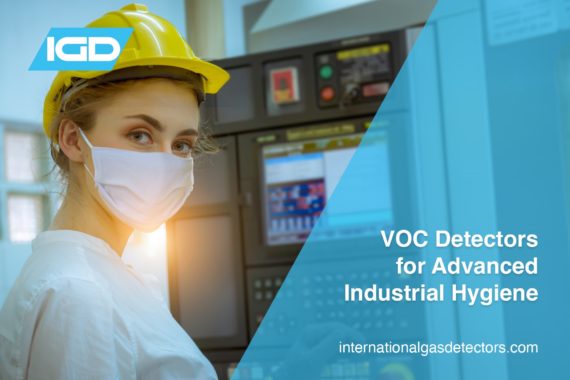As a lot of our readers may have seen in our PID and VOC articles, we frequently mention the terms ‘sputtering’ and ‘humidity’ and their effects on a PID sensor. But what does sputtering mean? And how exactly do these have a negative effect on the performance of a PID? This article aims to answer these questions, detailing these issues and how IGD has managed to negate them from our PID sensors.
VOC Detectors for Advanced Industrial Hygiene
Volatile organic compounds (VOCs) are very widely used in industry and represent a significant hazard to human health. In this blog post, we take a look at what VOCs are, their role in industry, and the importance of VOC detectors for maintaining industrial hygiene.
What is Blue and Green Hydrogen?
Hydrogen is a clear, odourless and colourless gas. It is the most simple and abundant element in the world and can be used as a pure gas (H2) or combined with numerous other substances to form compounds- many of which we heavily rely on today…
There are so many processes and labels for hydrogen, so it can be confusing what they refer to. Hydrogen labelled by colour refers to the hydrogen production methods used. In this blog post, we will focus on blue and green hydrogen as these are the most renowned methods of producing hydrogen. However, hearing of grey, brown, yellow, turquoise, or even pink hydrogen is not uncommon.
Why is Hydrogen Gas Detection Becoming More Important?
Hydrogen (H2) has become a popular choice for use in the industrial sector in recent decades, but the demand for it has increased and looks set to continue. With high demand for hydrogen comes a need for more reliable and readily available hydrogen gas detection systems. In this post, we will discuss how hydrogen gas is used, the importance of hydrogen gas detection and what options are available.
Gas Detection Solutions for Cement Production
Cement is the core component of concrete, and with the increased demand for more construction worldwide, there is a higher need for the most popular building material: concrete. During cement and concrete production, gases are produced that could harm humans and the wider environment; therefore, gas detection solutions are required for safety and monitoring purposes.
What are VOC Gases?
What are VOC gases? Where are they found? How can I mitigate the Hazards of VOC’s? These are all vital to consider if working around VOC gases, as VOCs are extremely hazardous gases causing a plethora of health issues. This article answers all of these important questions, as well as suggesting detectably better gas detection equipment in order to help mitigate the presence of VOC gases. Read on to find out more.
How Do We Monitor VOCs and Why Do We Use VOC Detectors?
VOC’s are extremely common and can be from surprising sources. Each VOC comes with its own exposure hazards and reasons these need to be monitored, these can be found by accessing each materials Material Safety Data Sheet (MSDS). But how are these monitored? And why do we monitor these gases? These questions will be answered in this article to help provide a basic understanding of VOC gases and the dangers.
Combining Fixed and Portable Gas Detectors for Complete Solutions
Gas detectors are usually categorised as either being fixed, portable or transportable. All of these types have a range of methods of detecting gas or vapour hazards and have their own strengths and weaknesses. Selecting the correct solution depends on the circumstance of operation, topography of the site or application and the nature of the gas hazard. For example fixed systems are impractical for sewer workers operating in confined spaces. This type of application suits a portable personal gas detector. Similarly an indoor process in a lab or production facility requires 24 hour monitoring, something a portable detector cannot provide. In some instances a combination of both fixed and portable provides the best solution so correct assessment of the hazard and best available technology to monitor is vital.
New 2-Wire Gas Detection Systems Launched
Today we are excited to launch our new 2-Wire gas detection systems. This major product launch represents a step change in gas detection. All devices connect addressably using two core cable for both









